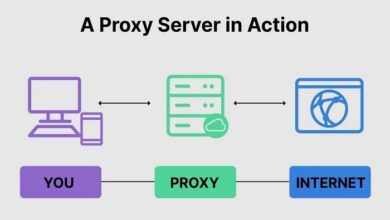Navigating the 403 Error: A Comprehensive Guide

Introduction
The 403 error, often seen as “403 Forbidden”, is a common HTTP status code that you might encounter while browsing the web. This error message indicates that you do not have permission to access the requested page or resource. In this post, we’ll explore what a 403 error means, why it occurs, and how to resolve it.
the 403 Error
A 403 error is an HTTP response status code that tells you that the page or resource you were trying to reach is absolutely forbidden for some reason. Different servers provide different messages for this error, but the essential cause remains the same: access is denied. Let’s delve into what causes a 403 error and how it differs from other errors like 404 Not Found.
Common Causes of 403 Errors
There are several common reasons why a 403 error might occur. These include issues with file permissions, erroneous rule sets in .htaccess files, or the need for authentication which has not been provided. Understanding these causes can help in diagnosing and fixing the issues that lead to the appearance of a 403 error.
Diagnosing a 403 Error
To fix a 403 error, you first need to pinpoint the root cause. This involves checking the server permissions, ensuring there’s no incorrect settings in your website’s .htaccess file, and verifying that your authentication details are correct. Each step can help you closer to resolving why a 403 error is being displayed.
Fixing 403 Errors on Your Own Website
If you manage a website and your visitors encounter a 403 error, it’s important to address it quickly. Start by checking file and directory permissions: Files should typically be set to 644 and directories to 755. You should also look at your .htaccess file for any incorrect directives that might be causing the 403 error.
Preventing 403 Errors in the Future
Preventing 403 errors involves regular maintenance of your website’s access settings. Ensure that permissions are correctly set, authentication mechanisms work as expected, and that your website’s security plugins or rules do not unintentionally block legitimate users.
The Impact of 403 Errors on SEO
A 403 error can negatively impact your site’s SEO if not corrected swiftly. Search engines might interpret a 403 error as an indication that your site is not a reliable resource, which could affect your rankings. It’s crucial to monitor these errors and resolve them to maintain your site’s credibility with search engines.
403 Errors and User Experience
For users, encountering a 403 error can be frustrating and may lead to a poor user experience. It’s important for webmasters to not only fix these errors but also to provide helpful information to users on what they can do if they encounter a 403 error. This could involve instructions to contact support or links to other accessible sections of the site.
Tools to Help Identify and Resolve 403 Errors
There are many tools available that can help you identify and resolve 403 errors. Web server logs can provide insights into why a 403 error was triggered. Tools like Google Search Console can help you monitor your site for these errors and understand their impact on your web traffic.
Case Studies: Resolving 403 Errors
Examining real-life scenarios where 403 errors were successfully resolved can provide valuable insights. These case studies often highlight common oversights and innovative problem-solving strategies, offering lessons that can be applied to manage permissions and settings more effectively.
Conclusion:
error domain Understanding and resolving 403 errors is crucial for website owners and developers. By taking proactive steps to manage permissions and monitor your site’s accessibility, you can prevent these errors and ensure a better user experience. Remember, maintaining clear access permissions and providing users with helpful error messages are key to managing a healthy, user-friendly website.
FAQs
1. What does a 403 error mean? A 403 error means that access to the requested resource on the server is forbidden. This can be due to lack of access permissions, incorrect credentials, or server configurations that restrict access.
2. Can a 403 error affect my website’s SEO? Yes, persistent 403 errors can negatively impact your website’s SEO as they may lead search engines to believe that your site is unreliable or not well-maintained.
3. How can I fix a 403 error? To fix a 403 error, check your file and directory permissions, ensure your .htaccess file is configured correctly, and verify that your site’s authentication mechanisms are functioning properly.
4. Are there any tools to help identify 403 errors? Yes, tools like web server logs and Google Search Console can help you identify and manage 403 errors on your site.




